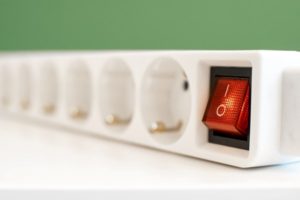

The Don'ts And Do’s Of Extension Cords
It can be handy to have extension cords when you need to provide power for devices with cables that cannot reach nearby electrical outlets. This makes powering electrical devices with extension cords a common and convenient practice.

Nevertheless, if not used properly, they can pose fire risks. Choosing the correct type of extension cord is essential to ensure electrical safety and prevent home fires
Follow these don'ts and do's the next time you visit a hardware store to pick out extension cords or when you are home and want to use extension cords safely.
Don'ts In Extension Cord Use
Do not mix extension cords with surge protectors.
Surge protectors and extension cords are not the same. Even though extension cords can also serve as power strips, that doesn't make them surge protectors.
Your devices are protected from sudden surges of electrical power by surge protectors. The purpose of extension cords, on the other hand, is to power devices that are too far away from outlets.
Small surges can damage electronics. To keep your devices safe, plug into surge protectors or extension cords with surge protection. On that note, avoid plugging extension cords into surge protectors.
Beware Of Overloading Extension Cords
Every extension cord has an amperage rating or a maximum current they can safely conduct. It will be best not to connect the extension cord to devices that need more power or multiple devices that exceed their maximum capacity. It is necessary to plug these appliances directly into a wall outlet due to their high-power capacity.
Make sure you choose an extension cord with a higher amp rating than the device you want to connect. It is also a bad idea to combine multiple extension cords.

For major appliances such as refrigerators, you should never use extension cords; always use a fridge guard for that. Furthermore, add up all amp requirements to prevent overloading the extension cord when connecting multiple devices.
Dos In Extension Cord Safety
Check Cords Before Using Them
You should always inspect cords before using them. Replace it immediately if you see any cuts or fraying on the extension cord or exposed wires. Make sure you use extension cords with three-prong plugs and plug the pins completely into the outlets.
You should remove any damaged insulation from service immediately. If you have an older house without three-prong outlets that accommodate the grounding plug, it might be time to update your outlets.
Also, covering the extension cord prevents heat from escaping and could result in a fire.
Extending cords should be visible and, if possible, should not cross heavily-trafficked areas. Those walking through the site could be at risk of tripping over them.
Buy Extension Cords With A Three-Prong Plug
Extension cords can be either two or three prongs. Each prong has its unique function. The prongs represent hot, neutral, and ground on the three-prong plug. By grounding excess power, surge protectors divert or block excess current.

So, the three-prong plug provides a safe place for power surges to dissipate; it drastically reduces the risk of electric shock and fire.
You can go ahead to upgrade your outdated electrical wiring before upgrading your outlets to safer three-prong versions
Use extension cords sparingly
Extension cords cannot replace proper wiring. If you use extension cords constantly for months on end, you could damage them by running a vacuum over them or moving furniture on top of them.
Remember to put them in your living room or other areas where you can see them. That will remind you not to use them permanently. For extension cords meant for external use, any location of your property where you might use mowers or other cutting equipment should be cord-free.
Don't run extension cords across rooms where residents might trip over them, and never fasten extension cords with staples. These could penetrate the insulation and connect with wires, posing a fire risk.
Make The Right Choice For Extension Cords
Take time to carefully read power cord labels, product information, and packaging before choosing one. Do not use indoor cords outside and vice versa.

An outdoor cord typically consists of a thick, yellow, or orange jacket that protects it from the elements. However, indoor extension cords are often thinner and come without a bright, dense coat. It's essential that the extension cord you choose is long enough and that it's been tested by an independent laboratory such as Intertek (ETL) or Underwriters Laboratories (UL).
Takeaways
In general, be cautious whenever you are dealing with electricity. The use of extension cords is quite simple. Likewise, many of the dos and don'ts of extension cords are pretty straightforward.
Be careful not to let your need to connect multiple devices override your safety concern. With the correct usage of electrical cords, one-quarter of the domestic fires reported between 2015 to 2019 and the resulting civilian fatalities could have been avoided.
